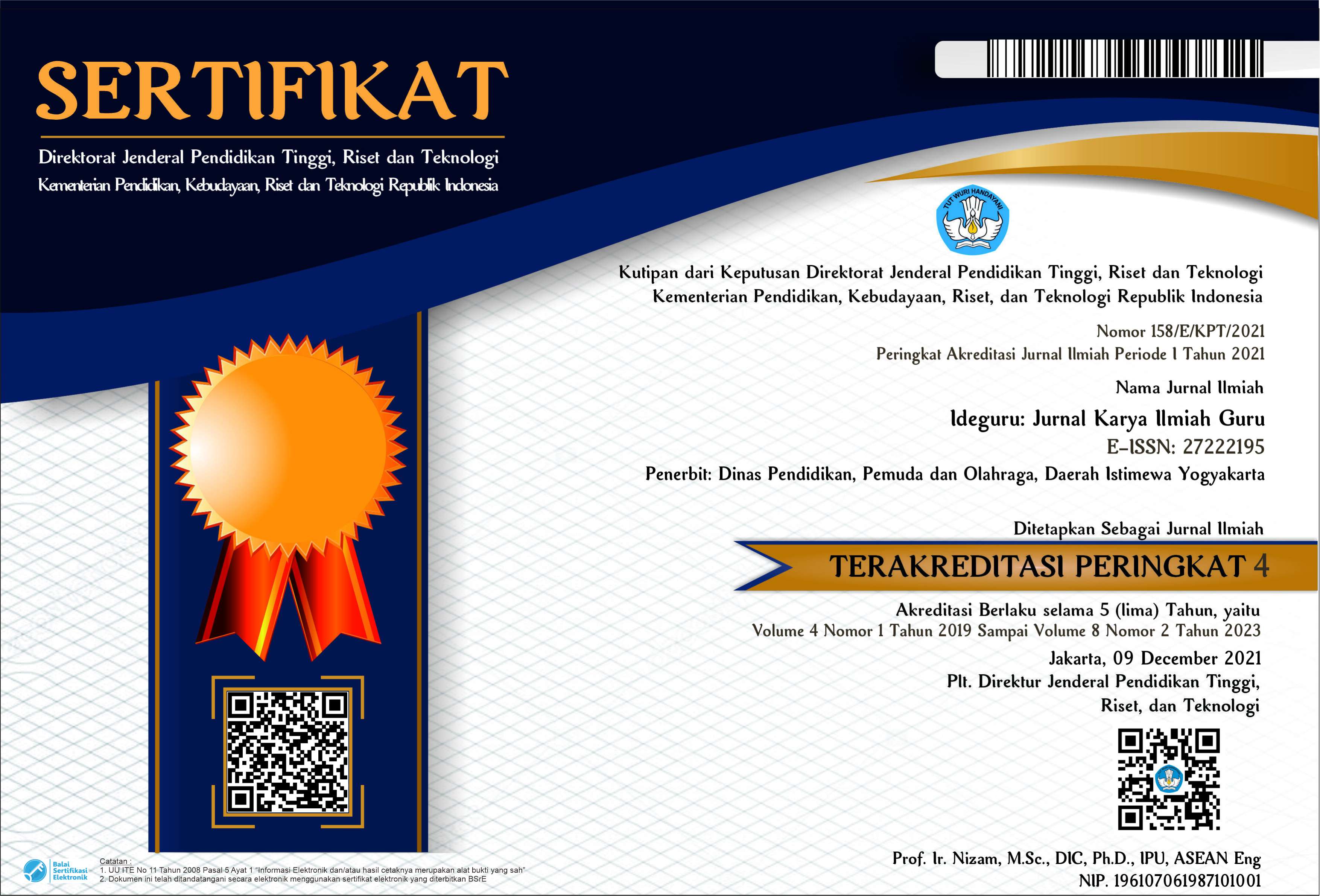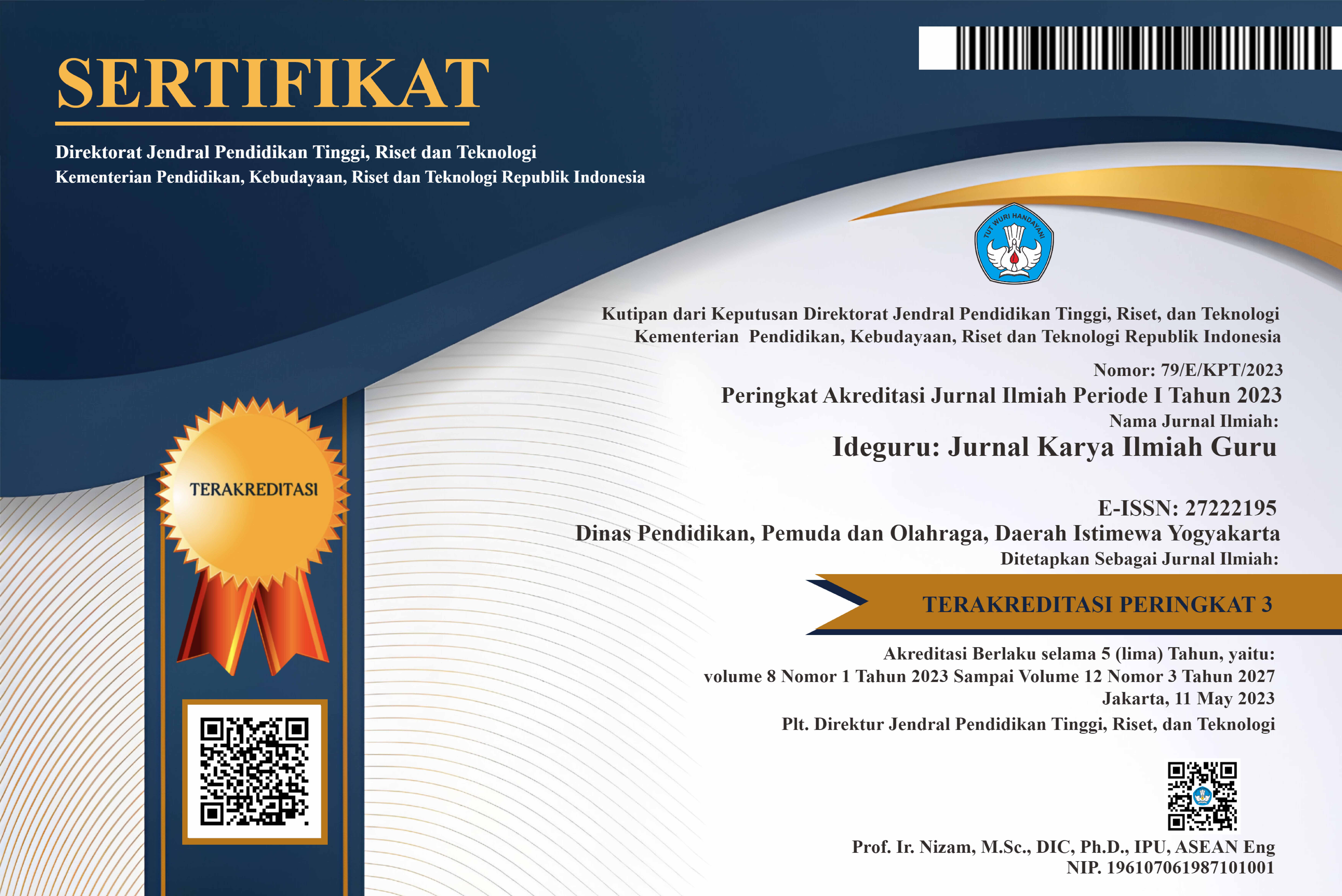Pengembangan Model Manajemen Literasi “Jus Carica” (Jumat Sehat Membaca, Mencari dan Menggali Wacana) Bagi Siswa SMK
Abstract
This research aims to design and use the "Carica Jus" literacy management model, which is an acronym for Jumat Sehat Membaca, Mencari dan Menggali Wacana. This literacy management model is a strategy to increase student literacy at Vocational High School SMK 2 Sewon, which is developed through reading approaches, seeking information and exploring discourse. The research was conducted using the DBR (Design Based Research) method from Mckenney & Reeves, 2013. Through the DBR method, the design, implementation and evaluation of training programs was carried out to develop reading literacy competencies for students. The choice of this methodology and the reasons for implementing it in vocational schools were driven by the belief that it was necessary to change the school's approach to literacy strengthening programs, which clearly could be improved. The research results showed a significant increase in students' reading skills, ability to search for information, and ability to analyze and manage information. Full support from teachers and all stakeholders in the vocational education environment is a crucial factor in the successful implementation of this model. Through proper implementation, this model can be developed in other vocational schools with the hope of having a significant positive impact on students' literacy skills, helping them be better prepared to face challenges in the world of education and work.
PDF Downloads
Copyright (c) 2024 Arifah Suryaningsih

This work is licensed under a Creative Commons Attribution 4.0 International License.

 DOI:
DOI:














